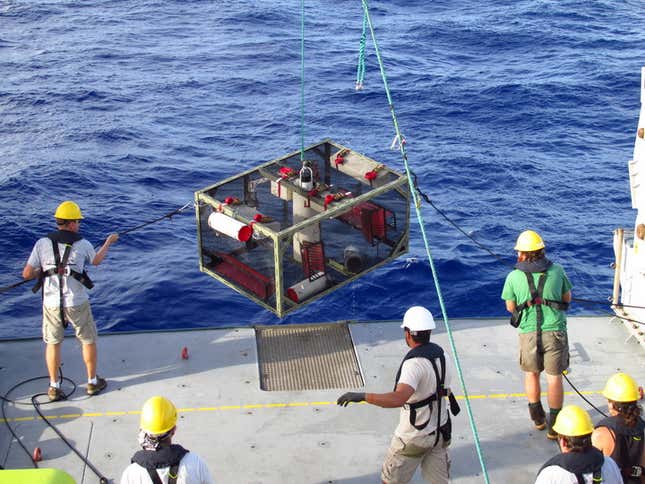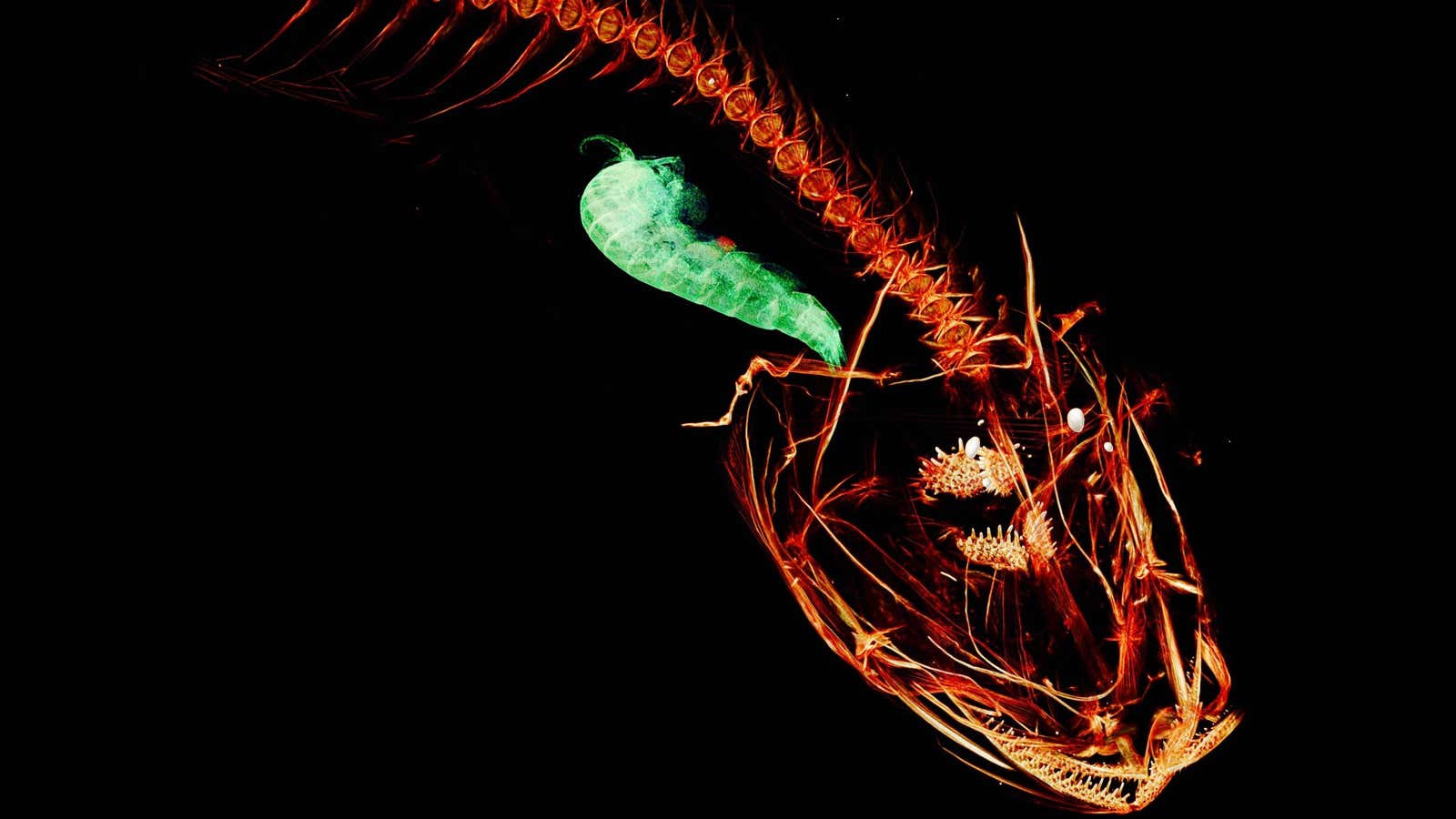There may be nothing new under the sun. But something new was just discovered deep in the ocean.
The Mariana Trench, in the western pacific, near Guam, is the deepest stretch of ocean on Earth. These waters are mysterious and difficult to study, but so far scientists know the depths are home to amphipods and other crustaceans, sea cucumbers, jellyfish, and tiny one-celled organisms called foraminifera. Now, we know the deepest waters are also home to the Mariana snailfish. This two-inch-long, translucent, scaleless fish has just won the crown for most intrepid sea traveler among the fishes, swimming deeper than 26,600 ft. Officially known as pseudoliparis swirei, the snailfish was introduced to the world in the journal Zootaxa (pdf) on Nov. 28.

Human divers cannot go where Mariana snailfish swim, but an international research team did sink cameras and traps deep into this difficult-to-reach and rarely-studied area over three years. The traps took four hours to fall from the ocean’s surface to where this snailfish swims. When the traps were raised, they held healthy, well-fed snailfish. The camera footage had captured their deep sea activities.
Mariana snailfish are under intense water pressure; a University of Washington press release issued about the study likens it to “an elephant standing on your thumb.” Yet the deceptively unimpressive Mariana snailfish not only manage to survive the pressure, but also lives well at these seemingly inhospitable depths. That’s because there are few predators and lots of prey, researchers say. The Mariana snailfish eat tiny crustaceans that get caught in the trenches they navigate.

“We think of it as a harsh environment because it’s extreme for us, but there’s a whole group of organisms that are very happy down there,” said lead researcher Mackenzie Gerringer, a marine biologist at the University of Washington. Further research in these depths may yield even more weird discoveries. ”There are a lot of surprises waiting,” Gerringer said.
There are about 400 species of snailfish living at different depths and ranging in length from two to 30 inches. Many snailfish, like the Mariana, inhabit very small regions of the sea. But the Mariana snailfish is unlike all of those previously known—not just because of its especially deep home, but because of its unique physiology and structure. The Mariana has a combination of dorsal and anal fins not found in any other snailfish species. At this point, the researchers have only reported observations about the species’ existence, and haven’t suggested reasons for these physical distinctions.
After taking measurements and DNA samples from the creatures, examining eggs from females, and scanning the skeletal and tissue structure, the research team determined they had indeed found a new species. Then they named it: The Mariana snailfish takes its appellation from its local waters of course, the Mariana Trench. The species’ latin moniker, pseudoliparis swirei, pays homage to an intrepid sailor with a similar spirit, Herbert Swire, who sailed the deepest uncharted seas and discovered the Mariana Trench, also known as Swire Deep, in 1875.
